#wof talk
Text

panel re-redraw

#blaze#princess blaze#wings of fire#wof#wingsoffire#wof art#wings of fire art#my art#wofart#wof fanart#wof talk#wof stuff#wof sandwing#wings of fire sandwing#wof graphic novel#wof design#wof headcanon#wings of fire headcanon#wof fans come eat#sandwing
823 notes
·
View notes
Note
I’ve seen a lot of kakashi fans saying he was anti-shinobi system and wanted it to changes and all… but I didn’t get this vibe from him at all in the manga? most of the times he’s either shown agreeing with the system, or just not having real opinion on what’s happening… if i had to choose, i would put him more in the "pro-system" category rather than in the "anti-system" category. what do you think about it?
((I hope this makes any sense 🫶 I really wanted to talk about this and the systems, but I’m not going to point out every moment with Kakashi. I think this mostly speaks for itself from a storytelling perspective. Long post 🍵))
Hm’ I can’t really understand the reasoning behind fans saying he was against it? Pro/anti-system doesn’t quite mean the same as pro/anti in fandom language in the context of such systems. Acknowledging the issues and not liking them but simply dealing with it anyway (‘Ninja’ literally is ‘one who endures’) because that’s expected of you as Shinobi, is not the same as actively rebelling against a system. They are soldiers that are trained to not show emotions and they become tools for the village. And the Shinobi system regulates the functioning of itself by stating Shinobi are tools for the country to use however they like.


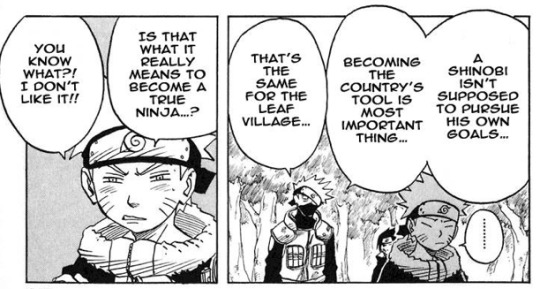

For Kakashi especially, ‘dealing with it’ meant dealing with it the ‘right way’ despite acknowledging these are issues, right? The way things just are. And the ‘right way’ becomes subjective to each character when you consider that every village operates through what they think is 'right' because the 'right thing' benefits the local community and not the entire world or an individual. Even someone like Zabuza who was seen as a 'heartless monster' wasn't able to truly become emotionless and surely his 'right way' felt justified in regard to his past and what he had to do.
But yeah for sure, overall, I agree.
Just to clarify though;
From my understanding it doesn’t mean much on its own saying a character is in favor of/against the Shinobi system because it isn’t really anything other than an overarching framework for all Shinobi and part of the hierarchal structure of many systems within the Narutoverse. It’s a guideline, practical and operates on a large scale where it provides for different countries to manage coordination or any challenges that may arise but its meaning for a single character is hard to measure. It’s vague.
Konoha has its own military/authoritative system specifically for Shinobi from the leaf (and thus, Kakashi) and to give that any socialistic meaning, it adopts the ideology they call; ‘Will of Fire’ which purpose is to blur your individuality and eventually replace it with a communal mindset which profits on a national scale, or village mostly. I’m not saying there wasn’t any individuality in the characters because they wouldn’t be enjoyable/relatable otherwise; like Kakashi was (very well) known for ‘copying’ and having the Sharingan.

'Hatake Kakashi is a cool man who doesn't risk his life lightly, but now he's putting his life on the line. The 'Spirit of Fire (Will of Fire)' burns within him!!'
And if you view things from this communal mindset that Konoha has then you’re very much in favor of the system... I don’t really see how you can argue against it? Konoha and other countries all interconnect through the Shinobi system, but it is the individual and local ideology that causes so much suffering and are the sources of the story’s conflicts in one way or another. Each micro-system prioritizes their own (unless you're seen as a threat ig) and it promotes loyalty to one’s country through the ideology.
((Like Konoha claiming you become stronger by protecting something that is important to you,

but then indoctrinating everyone that the single thing that is most important ‘to you’ is the village and your ‘comrades’. There’s truth it in it but there is a change in purpose as Naruto’s most important person isn’t even part of the village at some point but a personal connection that he prioritized above the community and national borders. This includes Gaara as well.

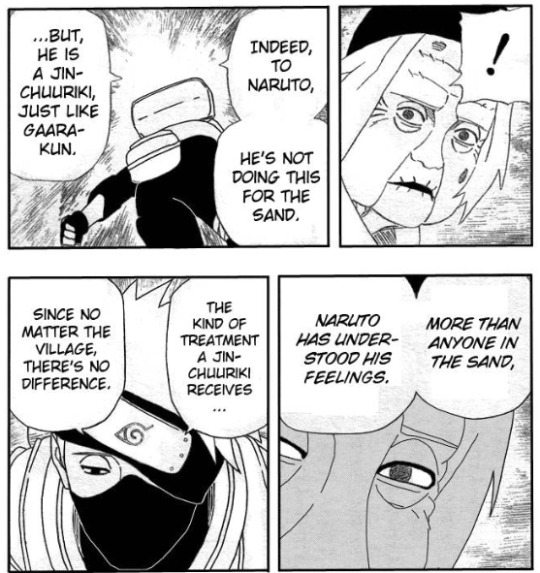

In that sense, you could say Naruto is selfish, but in this case that’s a good thing, really well written and has nothing to do with ‘going against Sasuke’s wishes’ weh~’.))
When countries go to war with each other or are in conflict, they will always favor their own (system), not the ‘Shinobi system’ and will chase to profit. It is their responsibility to adapt at all times to make sure it thrives, for better and for worse. And these systems pretty much always come with an ideology and especially military systems are very Nationalistic because its purpose is to protect. Against all costs, it prioritizes itself above all. 'Balancing power' was a way to 'promote friendship' between all countries, but that didn't really work out though, did it?
The WoF influences the character of Konoha’s system and it is through this that we can really measure what the narrative says regarding a character and analyze their (inter)actions. And Kakashi like most other characters very much operates through that (local system’s) ideology.. 🤷🏻♀️ There is nothing that truly indicates that Kakashi is against Konoha’s system much less is ‘rebelling’ or seen to behave in an antagonistic matter as told through the narrative. (Which tells us what is 'good/'bad' but allows you to question it still.) Most criticism Kakashi has against ‘bad’ aligns with the communal ideology that decides what is ‘right’/‘wrong’. That’s exactly why right/wrong and good/bad become incredibly muddy/grey and why it is nearly impossible for Naruto and Sasuke to find a ‘morally right’ answer for all and find peace in the story. Why the sequel probably (partly) didn’t even bother to try. Why the individuality of Naruto and Sasuke as main-characters were pointed out countless of times to indicate their roles which also changed throughout the story and why it became complicated when conflict rises between components within the same system.
I’m just pointing out there is a (huge) difference because you can’t really be anti-system if you’re literally a part of it in every way and operate through those beliefs and values even on a micro-level which is an extension from the overarching Shinobi system. Especially when issue’s are acknowledged at the same time.
((Sasuke was right that in order to force actual change, destroying just Konoha wouldn’t do much in terms of the overarching system. It’d still exist through individual values and Shinobi beliefs and even if all was destroyed physically, most likely it would rebuild the same way like Naruto mentioned unless Sasuke would forever control and keep an eye on the new system which he said was his plan. Kishimoto didn’t just suck that information out of his thumb, it’s based on the way shit works in real life too. Both Naruto and Sasuke wanted balance but offered different solutions. Yes, the Shinobi-system can be seen as the antagonistic force as well and one could oppose the entirety of it for sure, but this is only true for a few characters who’ve done a lot of research first or lived long enough in order to come up with such a conclusion/active decision and are seen as antagonists in turn by everyone else who are in favor of the system as well. But it takes a whole lot more than just wanting change in order to rebel and be anti-system and with that, development that you really shouldn't take lightly.))
But for the sake of efficient storytelling, why you’d even want Kakashi to anti the system in the first place...?
That Kakashi wanted things to change is only natural given his past, but countless of characters wanted things to change or admitted their wrong-doings ‘of the past’ and showed regret in any way. Especially authority mopes for a bit when faced with the consequences, but doesn’t take any accountability that really results in change even if they have the power to do so. Some even blame others. Like the Uchiha are blamed by Danzo for their own massacre??? A good Hokage that leads to lasting change doesn't just do what is currently expected of them and 'die like a hero', but thinks outside the box and is a little unpredictable. Almost has to rebel themselves for a bit which yes, we can finally talk about potential fr- Naruto had potential and it is backed up by Canon :') That's what potential is and not some hc possibility someone came up with on their own. Anyway, especially nearing the end they all start confessing which is kinda funny because a lot of them were already dead (Edo-Tensei) so it’s easy to then dump the responsibility to fix their fuck-ups on the newer generation (namely; Naruto and Sasuke) with a big ‘fuck you tho, but you’ll figure it out, good luck!’ on top.
Or.. you know;
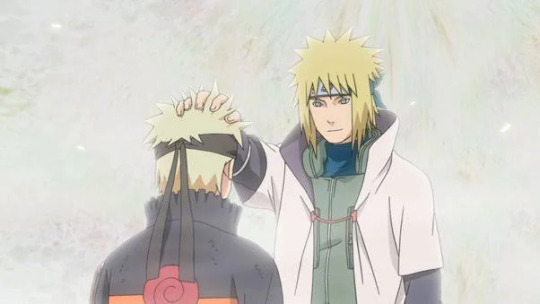
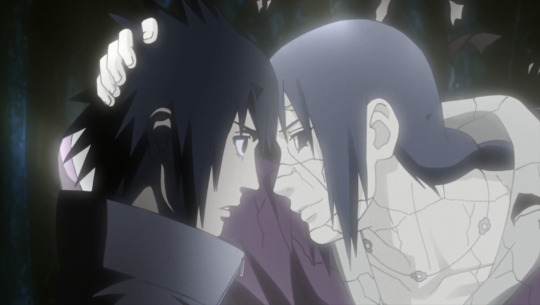
Figuring out what the system meant and finding an answer to change... it was kinda... the whole point of the plot. Each character plays a different role and contrasting viewpoints in a story serve great purposes to tell it. In regard to the system a few are;
Implementing the Theme wherein Naruto and Sasuke are offered (and forced) to find their individuality (outside of their role as Ninja where duty... or fate is decided for you)
Presenting an answer that eventually should’ve led to a change in history which otherwise would’ve just repeated itself (or will again later on)
To show that the current and evolved Shinobi system is the source of most conflicts (especially the large-scale ones) and that the main characters are burdened with this responsibility
The significance of actually questioning, challenging and showing dissatisfaction towards the beliefs and values everyone around you blindly adopted and the impact it has on the characters and the scene which is only possibly through a development that calls for it
Leaving the area of ‘right’/‘wrong’ and ‘good’/‘bad’ very grey in order to make antagonists more powerful and developed, because if the system is the cause of antagonistic behavior, then who is ‘right’ anyway? Is the system itself the antagonistic force or are all the antagonists 'evil'/'bad' by default? :')
Get where I’m going with this? It’s not Kakashi’s role to actively challenge these beliefs. In fact, if everyone who wanted change gained that role, then every single thing Naruto and Sasuke did and decided on would become insignificant. Naruto’s actions would’ve been understood by the people around him and Sasuke would gain sympathy which in real life is great and well-deserved (well, fictional too), but would make a very boring and mediocre story. Even Kakashi pointed out these differences between Naruto/Sasuke and himself many times while looking at the past and contrasting history with, well, namely Naruto and feared a repetition through Sasuke.
It is useful to the Theme that let Naruto and Sasuke explore what their bond/friendship meant, what anything meant really, and find their individuality outside the communal mindset of Konoha and from within. (Naruto’s Ninja way and Sasuke deciding to take matters in his own hands.) This development had meant nothing had Kakashi taught his students to rebel and question the system during their ‘team’mate days because maybe it was something he already believed in or because he operated through a personal philosophy instead of saying 'well, this is what it is, so...'. It would’ve influenced them in some way otherwise there is no reason to add it. But then Naruto and Sasuke’s choices wouldn’t have come from their development journeys or the trauma they lived, but simply because ‘their sensei said so/taught them’. (And sure, they could’ve challenged Kakashi on it, but that’s kinda pointless in this case. People often say Kakashi didn't understand certain things about his students and this all is mostly the source for it.) Much like Hokage-Naruto lamely claiming the village is ‘family’ because ‘the third always said so’. It’s meaningless to him personally. And what would that even mean for Sakura had Kakashi adopted contrasting beliefs? D’ykwim?
Nah' I don't like this system and it definitely needs to change. I'm very impressed in the way Sasuke gathered all this information and then was forced to move towards a single solution which... from his viewpoint then, was the only way until Naruto offered his idea that was only born from his own challenges. I also don't like how characters (including Kakashi) view it and use it as some sort of emotional weapon to manipulate, intentionally or not. Though, I wouldn't want it any different for the sake of the story and I still very much like Kakashi. It is that incredible persistence Naruto and Sasuke showed BECAUSE of that very resistance at every turn that made the story so good and their decision so impactful.
So yes, but no, I don't think it's a bad thing at all.
-
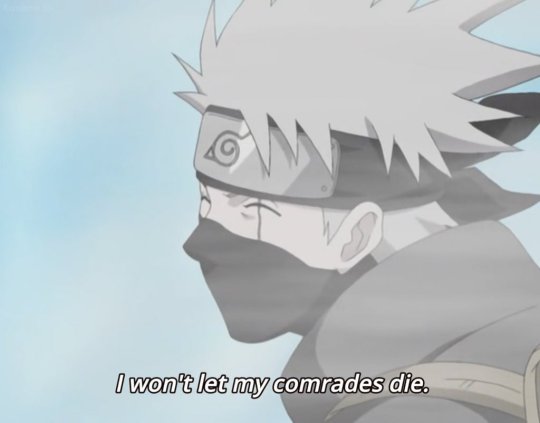
(And yeah, the whole ‘comrade’-thing goes together with it all, though that may need a separate post someday. I really want to talk about the meaning of the words ‘family’, ‘friend’ and ‘comrade’ in Konoha because it doesn’t mean anything anymore if it’s not tied to the individual and it’s communal for a Leaf Shinobi that carries the WoF. And for me personally, the way Kakashi went about it makes sense. Doesn't mean I like it, but it makes sense. Naruto vowed to become a Ninja his own way and found meaning regarding his bonds along his journey while blurring the borders between countries (and systems) while Shikamaru for example, simply decided that his and his team-mate’s lives were okay to risk for the sake of the mission and to ’retrieve Sasuke’ who is only a ‘comrade’ to him because he was a Ninja of Konoha, someone he didn't like on a personal level. And when Sasuke wasn’t a Konoha Ninja, no one but Naruto thought he was worth ‘saving’. That’s why Naruto was also questioning why someone would give up their life for one another after Sasuke did so for him and Hiruzen did for Konoha and Kakashi answered the way he did after Iruka. Why he gave up on Sasuke but died for Choji. You’re simply ‘family’ as a villager of Konoha, but it was Naruto and Sasuke’s role in the story to figure out what personal bonds mean to them.
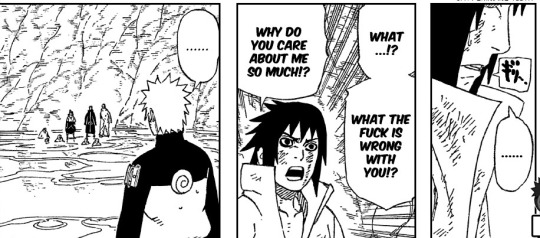

(I really want to make a separate post on this, I have too many thoughts, but gotta stop rambling ffs.)
17 notes
·
View notes
Text
Almost finished book 11 pre good so far

35 notes
·
View notes
Text
I find Sky creepy and feel sad about his situation.
Sky feel more childish than dragonest in wof, even if he an adult. Adult acting as kids creeps me out.
I spend some time thinking about Sky and why he like this... So here few things
Wren and Sky dynamic is toxic.
Sky feels dumb down so Wren could shine. Sky depends on Wren making desitions too much and can't be his own person.
Also Wren accidentally messed Sky mentaly up and now he stuck in kids mind set from which he won't grow up (it's a bit too late for him).. The ability to grow up was stold from him..
but you can't really blame Wren because she was a young kid that for sure had no idea what she doing rising another kid.
Sky doesn't feels like a sibling to Wren, but a pet.. a dog.
7 notes
·
View notes
Text
On Mudwing Culture
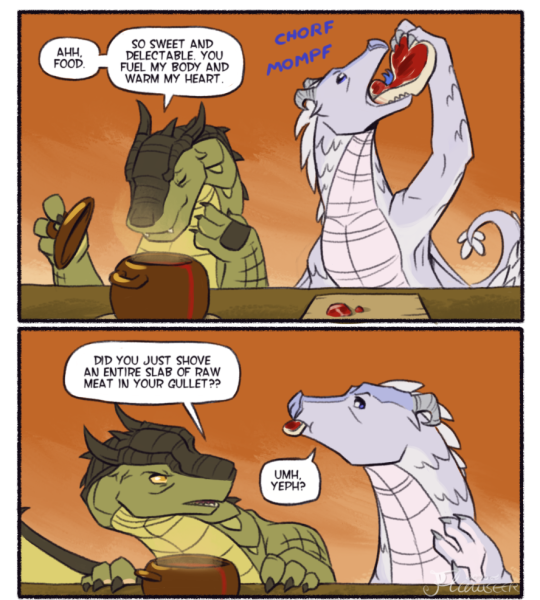
My last deliberation on Seawings and their eccentric insult vocabulary seemed to be well-received, so here is another one of my headcanons:
Mudwings are seriously into food.
I know, pretty revolutionary take when there is only a handful of named Mudwing characters, and two of them love eating so much that it either almost or entirely eclipses their personality.
But Clay and Ochre are not what I am talking about. This isn’t about a love of eating (though many Mudwings admittedly do have that). I’m suggesting that, out of all the tribes from Pyrrhia, Mudwings are at the forefront of food preparation and culinary innovation, to the point where a large part of their culture revolves around it.
The State of Food Preparation on the Continent
Pyrrhia as a conglomerate of different cultures largely sustains its populations through hunting and gathering. The average dragon, when the hunger pangs set in, will make a hasty trip into the nearest forest, cave, or scavenger den and round up some prey animals. In most cases, this prey will go straight from the talons to the mouth, or, if the hunter is a bit more forward-thinking, into the pantry, and then from talons to the mouth.
There are a few variations of this practice; Skywings may give the carcass a quick roast on an open flame before eating it, Sandwings may dry the meat out so the excess moisture does not upset their internal water balance, Rainwings will prefer fruit over meat. Icewings will nearly always consume their prey raw and unseasoned, as their extremely delicate palate is easily overwhelmed by intense flavors that may be released through cooking.
More complex forms of food preparation seem to exist mostly outside the scope of the general populace. The practice of “cooking” appears to be limited to the ranks of aristocracy, with dedicated cooks only found within the court of a queen or in private households of other high-born individuals. It creates a sharp divide between commoners and social elites, between the wealthy and (as Sea Queen Coral once put it so succinctly) the “eel-eating masses”. All exemplified through the differing standards of food.
And yet somehow, standing in stark contrast to everywhere else on the continent, nearly every Mudwing-- from the most low-born runts of the Diamond Spray Delta to the most decorated head advisors in the Queen’s palace --knows how to cook, and will do so regularly.
Why is that, and how did it happen?
Historical Benefits of Cooking
Most things that form the backbone of a culture usually start with some ancient practice that was useful at some point in time and then, as people kept doing it, eventually got absorbed into public awareness and became “the way things are done”.
Mudwings face a unique challenge compared to anyone else, as they are the only tribe whose combat prowess is significantly affected by their environment, specifically climate, weather, and temperature. Sure, you can take any dragon, drop them into an unfavorable climate, and they will generally perform worse than under normal circumstances. But the unique weakness of Mudwings is that they lose their breath weapon when they get too cold. Place an Icewing into a burning room and they will still be able to use their frost breath. Pluck a Sandwing from their dry environment and drop them into the humid, sweltering hell of the jungle, their natural weapons will still function. But make a Mudwing cower between two piles of snow for a while, and their internal fire will go out quickly.
As you might imagine, this is a bit of a liability when you have to defend your territory from Skywings hiding and scheming among the frozen peaks bordering your country.
So the ancient Mudwings had to figure out a solution to their conundrum, and what they came up with was this: They got a large pot and filled it with water, threw in all manner of meats, plants, and herbs, whatever they could find where they were holed up, then boiled it until it was good and filling. The hot food in their bellies helped them stay warm even at high altitudes and allowed them to stand their ground against the northwestern invaders.
Soon it became tradition for troops to share a hotpot the night before battle, and a rich variety of hearty broths and stews developed from there, as these were simple to make from scraps and could be reheated easily. The practice became so popular, the Mudwings kept doing it even during peacetime. Soon, in addition to the hunting of prey animals that was commonplace, Mudwings began to cultivate vegetable gardens to have access to a more stable supply of ingredients. Eventually, their growing understanding of agriculture allowed them to grow rice, which was especially well-suited to the abundance of wetlands found in their territory. Everyone was cooking now.
The Role of Food in Mudwing Society
If you ask several Mudwings which core values represent their tribe best, many would likely put forward some variation of “camaraderie”, “family”, or “loyalty to your sibs”. They are a very social people who form deep bonds with those whom they grew up with, and one of the most direct ways to grow close to someone is to share your meals with them every day. As such, the preparation and consumption of food is a vital part in maintaining cohesion between members of a Mudwing sibling group.
Every one of these groups will have a “Bigwings”, which is understood to be a combination of a leader and caretaker role. The Bigwings is aware of all of their sibs’ culinary preferences and needs and has all of the troop’s recipes memorized. When mealtime approaches, he or she makes the call on what kind of dish will be prepared and delegates roles and tasks to the troop. This is a daily exercise that builds the Bigwings’ authority and communication skills, and reinforces trust and familiarity between all siblings.
Next to the Bigwings is the Gatherer, which historically was a role assigned to one or more troop members who foraged for wild vegetables or hunted more prey if the previous communal hunt did not yield enough. While this is still true today, many Gatherers also maintain a garden or wet patch to source fresh vegetables or grain for meals.
And lastly there is the Communicator, which is a role usually assigned to the most social and charismatic sibling. The Communicator is vital for coordinating battle strategies with other troops, which, while very important, is not really all that relevant for this deliberation. What is relevant however, is the role they fulfill during peacetime, which is to set up joint meals between two or more sibling groups. This practice is critical for maintaining morale, as doing this regularly helps expand the troop’s palette and keep their Bigwings inspired. That way the troop’s collection of recipes stays fresh and innovative instead of turning stale and rigid.
Of course how much each troop values culinary exploits varies between individuals. Some Mudwing groups are outspokenly passionate about cooking and advancing their craft. They might view their work as an expression of art and get very upset or offended if you indicate that thinking about food is unimportant or a waste of time. Some extreme cases may even get angry at you if you waste ingredients or refuse to elevate a dish to its fullest potential by not seasoning it well or doing something else to ruin it. Other groups may be more relaxed and casual about food preparation, and a few might even not think about it much at all.
If a Mudwing invites you to dinner, it is paramount to figure out which of these groups they belong to beforehand, so you may get an understanding of how much of a threat this outing may pose to your health, especially if you are an Icewing or Seawing with a limited palate.
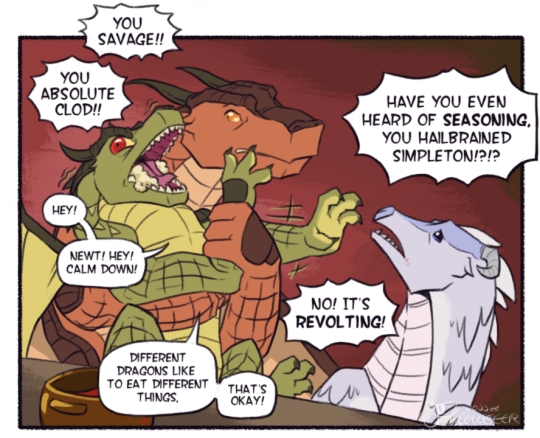
Is there any evidence for this in the books?
To my knowledge, there isn't much. Mostly because there isn't much about Mudwings and their culture in general. Across all the books, only one of them has a Mudwing protagonist, and the vast majority of it is spent in the Sky Kingdom, so his roots don't get a lot of exposure. Then whenever another Mudwing comes into the story, they tend to exit it very quickly after, without being able to share more.
I made this theory for myself largely in response to Mudwing culture being such a big question mark. I initially came up with it when I saw a Mudwing gardener in Escaping Peril and thought "That could be a cool direction for the tribe." The guidebook that released recently gave me some additional pointers with regards to a few of the looser points of this theory.
I'm hoping it is interesting, or at the very least entertaining in some way.
1K notes
·
View notes
Text
I think a lot of people mistake Sunny's resilience and hope in the face of a miserable and bleak scenario as childlike innocence and her not fully comprehending the danger of it all. Her optimism is a response to the pessimistic and nihilistic world around her. She truly believes in the prophecy. It has to work. That's what they've suffered all this time for. Everyone. There will be peace on Pyrrhia and it'll be delivered by her and her friends.
Her own arc in her book, about rising above the expectations placed on her and proving herself as dragon of worth, was foreshadowed a lot with how the DoD treated her. They themselves infantalized her despite being unaware of it. They believed Sunny to be weak and helpless. The little, tiny sister who needs to be protected.
Despite this, she's strong. She's smart, observant, and even Clay mentioned that she's a great fighter because she takes advantage of her small stature and people underestimating her. She isn't childish, but rather she believes that they'll pull through. That they'll bring peace. In the end? They do just that.
Sunny's optimism I feel is a nice breath of fresh air. A lot of protagonists like her go through hell and back and become a lot more jaded. Her? It's her hope for a better future that keeps her going. Even in the darkest of situations, when she should breakdown and succumb to the overwhelming misery of war and tragedy, she. keeps. going. She believes. Despite the cynicism of the DoD, even with Clay at times feeling despondent, she continues. She moves onward. She fights.
And...she wins. Peace is achieved on Pyrrhia. The prophecy came true.
#We can also talk about how Sunny's disability and how she's treated by others through a lens of ableism#But I don't think you all are ready for that conversation about you subconciouslly infantalize and babyfy disabled people#wof#wings of fire#sunny wof#sp-rambles
544 notes
·
View notes
Text
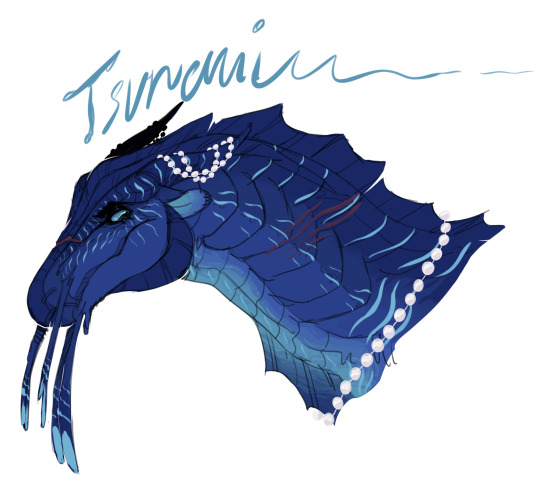


Favorite characters from each arc -- Tsunami, Winter, and Sundew. It's always the angry grumpy ones for me lol
#i will defend these guys always#in reality i think theyd all just argue with eachother but also talk shit abt other dragons at the same time#....i need to draw that#also i can draw pearl jewlery!!! yay!!!!#wings of fire#my art#tsunami wof#sundew wof#winter wof#wof#dragons#dragon
746 notes
·
View notes
Text
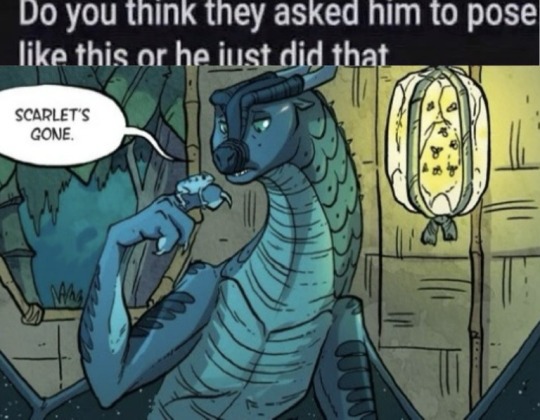
#cause why was she SERVINGG in this panel?!?!#no but fr why was she just. posed like that casually#no hate to her tho she ate and left no crumbs by literally sitting there#srry ive only been posting memes btw i want to talk abt more hcs and stuff but im trying to focus on school rn :3#wings of fire#wings of fire memes#wof#wof memes#moonwatcher wof#wof moonwatcher#moon wof#wof moon#jflxwr#jflxwr memes
451 notes
·
View notes
Text
Crazy how saying “despite its flaws I think WoF is a pretty good book series” can be called a controversial take on WoF Tumblr. Like there’s this underlying tone over every discussion that the books we talk about suck and fall apart if you try to look at them critically. I don’t love everything about WoF, especially not modern WoF, but there’s things these books do better than other middle grade books. It’s also worth mentioning that yes, these books are made for 8-12 year olds, so if you’re not into it anymore, that’s perfectly fine, go read books meant for your age group lol.
Bottom line, there shouldn’t be any shame in enjoying these books, you don’t have to say “growing up is realizing wof sucks” and “real wof fans hate wof” or something. I think if people really did hate it nobody would talk about it as much as they do anyway.
#I tried to word this as civilly as I could cause I do not need to start arguments w people about this lol#this is just something I noticed and wanted to talk about#kal thoughts#kal wof rambles#wof#wings of fire
595 notes
·
View notes
Note

As soon as I saw Eerie I thought of this meme :D
BAHAHAHA, oh that’s unsettling. accurate though!
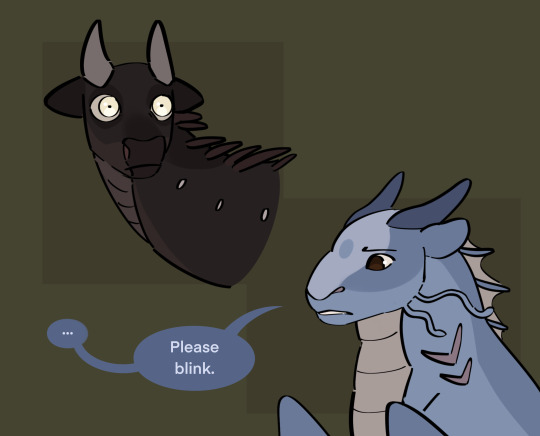
339 notes
·
View notes
Text
wof infection au part 3! more under the cut; all parts will be tagged under 'fragariapathosis' 😋😋
cw for scary imagery!! creepypasta-esque stuff, disease, blood, trypophobia, body horror, et cetera et cetera. inspired by the mlp infection aus on tiktok yayy

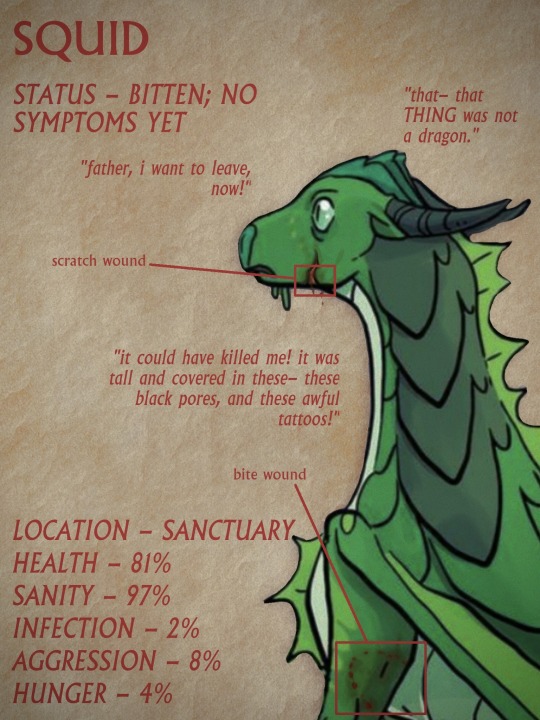


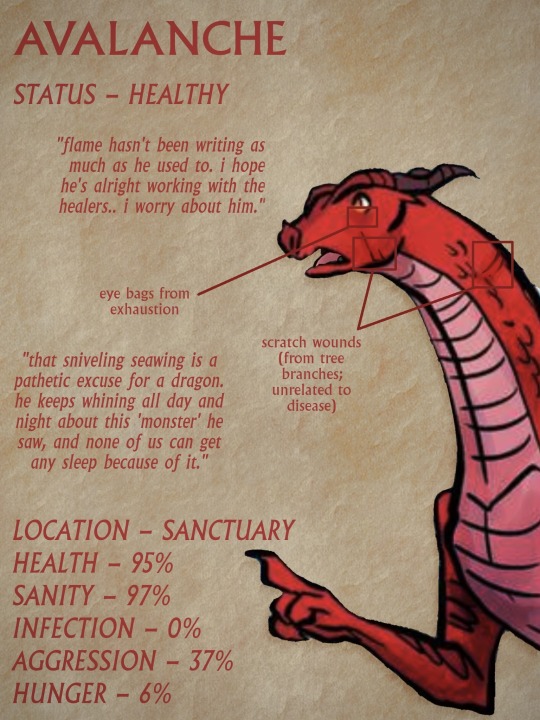
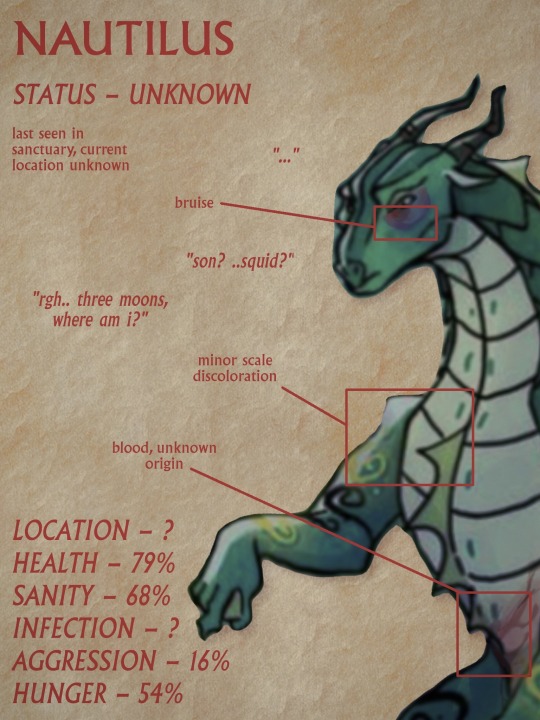
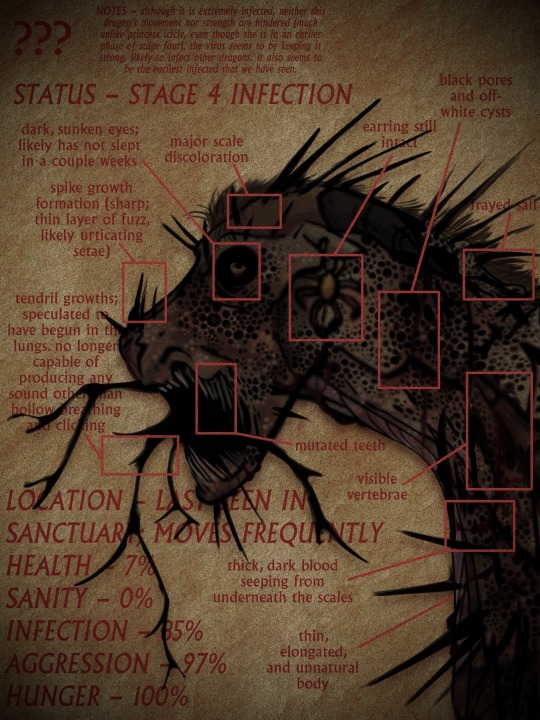

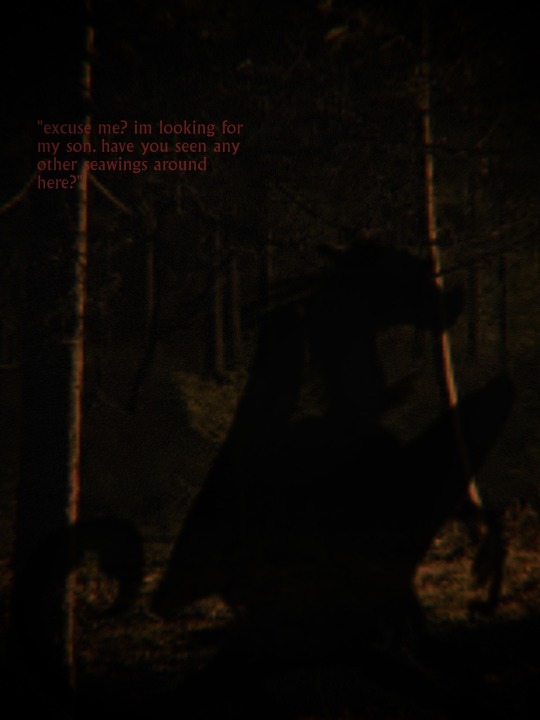

#i had to leave out 2 frames bc there wasnt enough freaking space!!!!#it was just silly infected friend being quiet and nautilly trying to talk to him its not much#wof#wings of fire#wof au#wof horror#horror#infection au#infection#fragariapathosis#squid wof#ochre wof#avalanche wof#riptide wof#nautilus wof#secret silly sandwing. not saying who but im sure you can figure it out#fragariapathosis storyline
396 notes
·
View notes
Text

winter having to hold icicle's head up is going to haunt me more than i originally thought actually
#the fact that they literally never talk again. SICK & TWISTED#thanks mike holmes i really needed another panel that i'm gonna be thinking about for the rest of my life#wings of fire#wof#winter#icicle
165 notes
·
View notes
Text
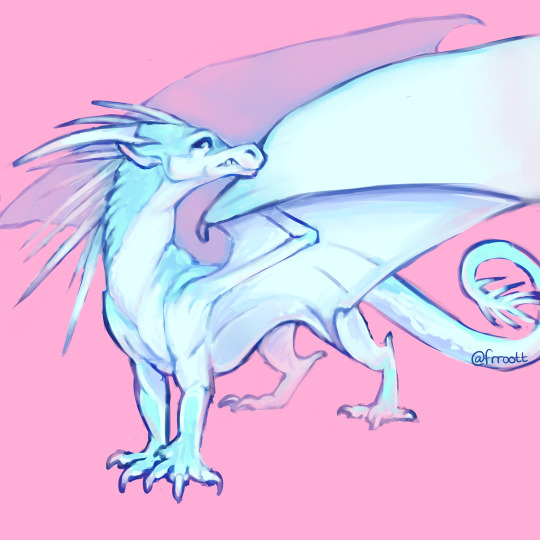
The Icewing Prince regards you with disgust 🥶
#artists on tumblr#art#digital art#my art#dragon art#fanart#winter wof#icewing#has a snout for soulful tragedy#he really said trans rights with these colours tho#Ik he’s silver or whatever#but let's not talk about that
413 notes
·
View notes
Text

Based on the variety among sea animals I decided to make some regional variations of the coast strikers (note that these are variations only, not entirely new quivers or clades). The dragons shown here would be the most “defined” archetype of each variety, showcasing most or all traits characteristic of said kind. They all share certain base features, like rudder shaped tails, gills, harpoon tongues, echolocation, double rows of teeth, and flat tail spines that can be detached and thrown. However, some traits change or are more common in each variety:
Deep water
Make up about 5% of the population, and inhabit the smaller communities in deeper ocean. The main activities here are algae and mollusk farming, as well as resource collection from the sea floor, both of which require a more long term stay –despite the dangers of sea serpents and other such beasts–. Slightly smaller than their cousins, they’re better equipped for the depths rather than for flying: shorter wings, webbed talons, very broad tails, and gills being more oxygen efficient, although their dart spines are usually less in quantity and shorter compared to inland dragons. Extra flippers and more fin tissue between spines is common, as well as larger eyes to take in more light. Their most notable trait, is that of translucence. Most commonly, it’s usually just wings and torsos that are see through, but different dragons showcase different levels of said trait, some being completely translucent in rare cases (of course, trading better camouflage for less armor). Coloration typically goes from dark colors similar to coastal strikers, black, red, or sometimes pale colors (the latter present usually in the populations living in the deepest available settlements). Rarely, some slight bioluminescence is present in transparent sections of the body.
Coastal
The representatives of the Roaring Coast quiver, being around 80% of their numbers. Sleek, tall but well muscled, they inhabit the sea side cliffs on the coast and some settlements in shallower waters. Extremely long and narrow wings are perfect for soaring for hours out at sea, with webbed back talons and a flattened tail making them adept swimmers. Their blade shaped spines are plenty and deadly when thrown, and offer some protection to their necks and backs. Fin tissue in between the spines is few or non existent. An odd ability most present in this variety, is the one of spitting ink. Manifesting itself as dark splotches in the throat, this ink is dense and quickly expanding underwater, and very sticky and thick on land, making it useful at deterring predators or confusing prey. Countershading is the standard regarding coloration, with light colors underneath and darker ones on top, the latter usually ranging from black, gray to washed out shades of blueish or purple hues which shine with more vivid highlights under the sun. Most common patterns are stripes or flecks. A perfect balance between the sea and land.
Inland
The remainder of the coast striker population, they live in the rivers and lakes on the edges of the Roaring Coast territory, further inland but still relatively close to the ocean. Shorter but more stout than coastal strikers, with medium length wings, broad whiskered snouts and narrower tails. Their spines are closer to the average AshWing, being more needle shaped rather than a flat blade. Their colors are similar to those of pebbles and gravel (more earthy tones) and messy patterns of spots, blotches, stripes and rosettes. Fin tissue is more similar to that of fish, making itself present more than in the coast variety but less than those of deep waters, as well as having some slight webbing in all talons. Some notable features are some splashes of brighter colors, and semi retractable barbs in limbs and backs –like those of catfish– which can sometimes inject painful venom. These last two traits are similar to the ones present in swamp lurkers; this could be the result of convergent evolution or cross breeding between clades, given the relative proximity of their territories
On a final note, characteristics mentioned here aren’t exclusive to each variety: there could be a coastal striker with slight translucence and barbs, a deep water striker with whiskers and ink, or an inland striker with full talon webbing and jet black scales. These are increasingly likely if one parent has said traits. Additionally, many times these varieties and traits are not so starkly differentiated as are the ones show here, usually being a mild mix between some
#wof#wings of fire#ashwing#wof fanflight#art#all of the ramblings and info is under the cut teehe#also some differences i didnt really explain but you can see them (like the shape of the horns or spikes or claws etc.)#im having funnnn this is so fun#also clade is the word i think i'll be using when talking about the dragons so i dont have to say quiver each time#like. quiver is the society and clade is the type of dragon lol#if theres typos im exploding. and i forgot to draw the earsssss#ALSO each of these designs are now owned by friends lol (ily guys you know who you are)
295 notes
·
View notes
Text
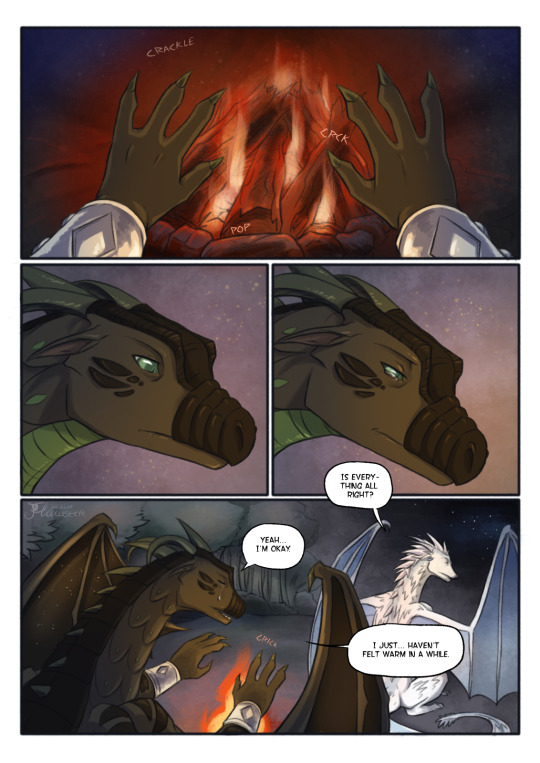
Warm
Wings of Fire occupies this strange meta-textually dissonant niche. There are a lot of disturbing and even grotesque things happening in it, like people's eyeballs getting dissolved by acid, characters compelled by mind control to ritualistically disembowel themselves, families getting torn apart by war, several attempted genocides, and an alarming amount of parental neglect and abuse.
But then, due to its nature as a book series aimed at children, the story finds itself unable to dwell on these horrific events that would realistically do irreparable damage to anyone experiencing or witnessing them. The narrative just kind of stands at the side and tries to look away, waiting until it's over. Characters remain oddly chipper and unbothered by sights that would ruin an average person.
This is not an accusation. I understand why it is that way. Sutherland desired to write a story about dragons for kids, which is a valid and admirable endeavor. In such a framework it would likely be inappropriate to do a deep dive into the psychological depths of a cast of traumatized characters.
But as a fan of her work, I find it an enticing thought exercise to look at the events of the story and examine them in a way the original text doesn't. To dwell on these experiences and the emotions they would beget. You'll find that Pyrrhia is filled with millions of little stories that haven't been fully told. A mother, displaced in time through torturous imprisonment, finds everyone she knew and loved is dead, safe for a son whose trauma has warped him into a twisted, murderous monstrosity. A nephew loses his beloved aunt to illness and his abusive family likely will not allow him to attend her funeral or gain any closure. And many other tales that aren't really relevant to this silly comic page, but still equally as fascinating.
#wings of fire#wof#dragon#digital art#wof art#flawseer art#flawseer talk#flawseer story#wof foeslayer#wof winter#wof nightwing#wof icewing
840 notes
·
View notes
Text

slaps you
331 notes
·
View notes